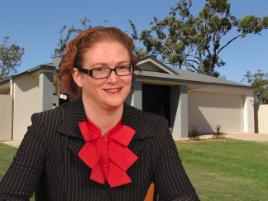Don't count on privacy if a 'property drone' comes snooping
Published on 03 May, 2013
There has been an increasing use of drones or unmanned aerial vehicles (UAVs) for property-related services such as marketing, property inspections and in the agricultural arena for vegetation management and animal welfare.
However, people should not assume they can prevent drones flying over their property.
That's according to Dr Kristy Richardson from CQUniversity's Property programs, who says that drones or UAVs are subject to regulation by CASA.
"Remedies for any invasion of privacy will not be related to the person's ownership of the land but invasion of their personal rights," she says.
"A UAV can be used for air work, including commercial operations, in activities such as aerial photography, surveying and law enforcement. The CASA regulations provide that UAVs are not for private or recreational use.
"The regulations provide that unmanned aircraft activities are approved for operations over unpopulated areas up to 400ft AGL (above ground level), or higher with special approvals. Operations are not permitted in controlled airspace without CASA approval and coordination with Airservices Australia. UAV flights over populous areas cannot be conducted without certification.
"All of this simply means that a person's property rights in terms of their ownership of their particular lot of land probably won't be infringed if the UAV flies within a landowner's airspace. Even if the UAV flew unlicensed into a person's airspace there probably won't be an action for trespass available to the landowner.
"The boundaries of a lot of land particularly of airspace are not as extensive as people may imagine. Originally it was considered that a landowner owned through to the middle of the earth and to the heavens above but that notion has long been displaced.
"There is no legislation specifying the height into the air that a person owns and other laws limit the airspace owned or able to be controlled by a landowner. For example, planning and building regulations impact the height to which you can build. Further, the courts have assessed the airspace boundary of a lot of land as being that which is needed for the reasonable use of the land.
"A case from 1978 is still regarded as good law with respect to trespass of airspace. In that case the court held that the flying over taking of photos of a house did not amount to a trespass or infringement of the landowner's property rights. In other words the boundaries of the landowner's land had not been breached. The Court held that a landowner's proprietary rights to their airspace are restricted to the height needed for their reasonable use and enjoyment of the land. The aircraft on the facts of the case was flying far above the height that was needed by the landowner to fully enjoy their land.
"Put simply then would be hard to establish that a drone flying at the licensed height would be trespassing on a person's land. This position may not be altered where a UAV is flying below the licensed height as depending up how low the UAV is flying it still may not be regarded as interfering with the landowner's reasonable use of the land."
Dr Richardson says infringement of property rights attached to land ownership and the boundaries of a lot of land, specifically an action for trespass, must be distinguished from other potential remedies.
"In saying that though don't count on a breach of privacy being made out if a drone appears over your land," she says.
"The Federal Privacy Commissioner announced in 2012 that whilst an agency or private sector organisation wishing to use drone technology would need to comply with the Privacy Act (which includes giving notice to affected individuals about the collection of their personal information, only using and disclosing the personal information as permitted by the Privacy Act, and keeping it secure) the Act does not however cover the actions of individuals in their private capacity, including any use of drones by individuals. Remedies for any invasion of privacy in such circumstances will not be related to the person's ownership of the land but invasion of their personal rights.
"Given this uncertainity, the expansion of the use and growing options for use of drones, many bodies are calling for legislative intervention in the regulation of drones so as to protect privacy.
"Whether such reforms would seek to deal with a landowner's rights with respect to the preservation of the airspace boundary of their land is probably another matter entirely."


